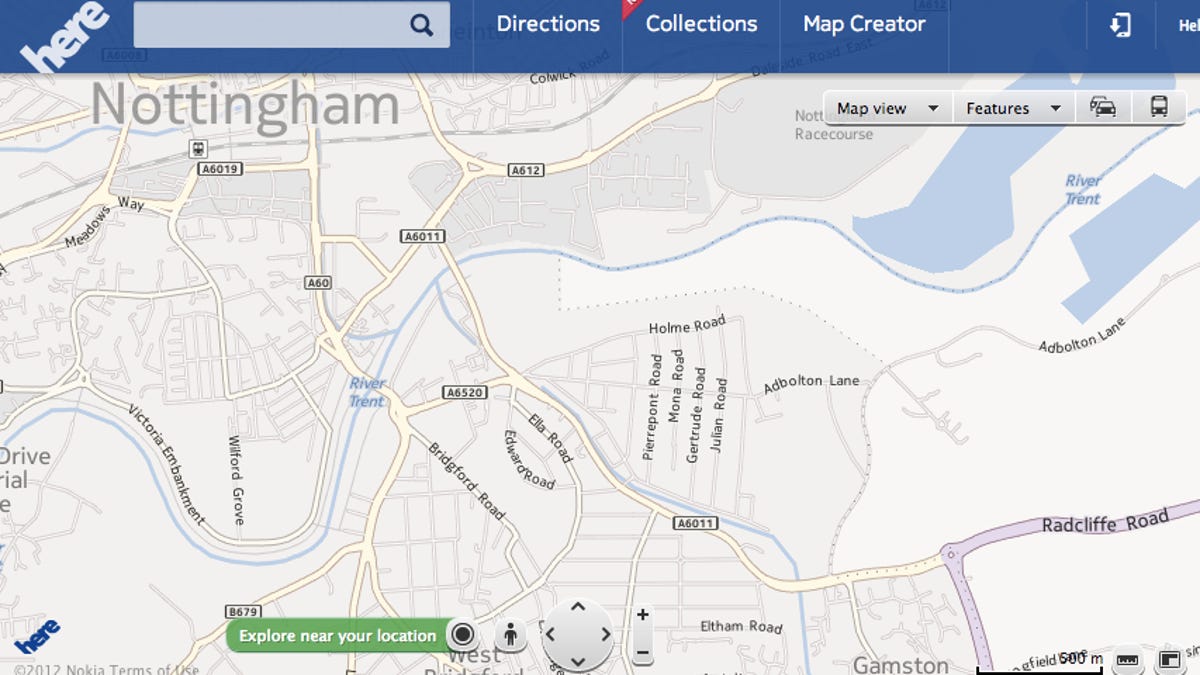Nokia navigates new map strategy with launch of 'Here'
Company puts mapping front and center with a new cloud-based location brand and platform, as well as the acquisition of Earthmine and its 3D-modeling technology.

SAN FRANCISCO -- Nokia has put its mapping unit front and center with the introduction of its Here cloud-based location brand and platform, which was unveiled during a media event here this morning.
"Maps and location experiences should inspire us to sense our world," said Nokia president and CEO Stephen Elop, adding that the Helsinki-based corporation is now working on "creating more personal maps that change how we navigate our lives."
Elop said that the "quality and quantity" of data available will enable Nokia to "transform mapping in ways we haven't even thought possible yet." He added that Here is also being built to be span most mobile operating systems and devices.
"We want to give everyone with any type of device the ability to use this, the best location platform in the industry," Elop remarked, arguing that "openness is what sets Here apart" from any mapping service in the world.
For instance, Nokia revealed that it will be rolling out an SDK for Android during the first quarter of 2013. The Lumia maker is also jumping on the opportunity presented by the kerfluffle surrounding Apple Maps with Here Maps for iOS, which will debut in the next few weeks. Nokia has also formed a new location-focused partnership with Mozilla based on HTML5.
Michael Halbherr, head of Nokia's location and commerce unit, posited that building such product a requires a great deal of scalability as it will be updated based on user-generated data as well.
"We need to translate usage into better services so that more people are using Here," Halbherr said, explaining that by learning more about how people use its mapping solutions, the better Here will get for everyone.
Halbherr also stressed the importance of weaving together information from many different sources and methods for building the kind of comprehensive mapping platform that Nokia is aiming to achieve.
"We need to deal with millions and millions of updates," Halbherr said. "If my daily life depends on it, what is on a map has to be accurate."
Halbherr briefly touched on the newly announced acquisition of Earthmine, noting that "with Earthmine, we're not just getting great technology in driving our 3D roadmap forward." Rather, Halbherr continued, together Nokia and Earthmine will combine their photographic capture and modeling solutions into one process to take street-level capturing to the next level.
It turns out 3D modeling of urban areas, or computational cartography, is a chief priority for Here as Halbherr said that Nokia wants to "be able to compute the city -- not just visualize it."
"This is very different from using the same static map and just putting bubbles on it," he added, describing that these are actually "millions of maps" layered on top of each other for on-demand computation and information based on the need of the user.
The benefits, Halbherr listed, with this approach include true offline usage, fast local rendering, and low bandwidth requirements (just roughly 12GB for mapping the whole planet).
But Halbherr assured that, ultimately, the concept of mapping hasn't changed. Instead, it's the content that needs to evolve.
With the new Lumia smartphones that launched earlier this year, Nokia already rolled out several new and upgraded location-based applications, including Maps, Transit and Pulse.
To further emphasize Nokia's achievements in digital mapping, Elop asserted that the Finnish phone business was the first company to digitally map the six continents where people live. He also cited that Nokia utilizes more than 80,000 data sources to update its maps daily.
Halbherr further touched on this later in the presentation by noting that there are more than 2.7 million changes to Nokia's maps each day, stemming from local sources to industrial methods.
This story was first published as "Nokia replots mapping strategy with debut of Here" at ZDNet's Between the Lines.

